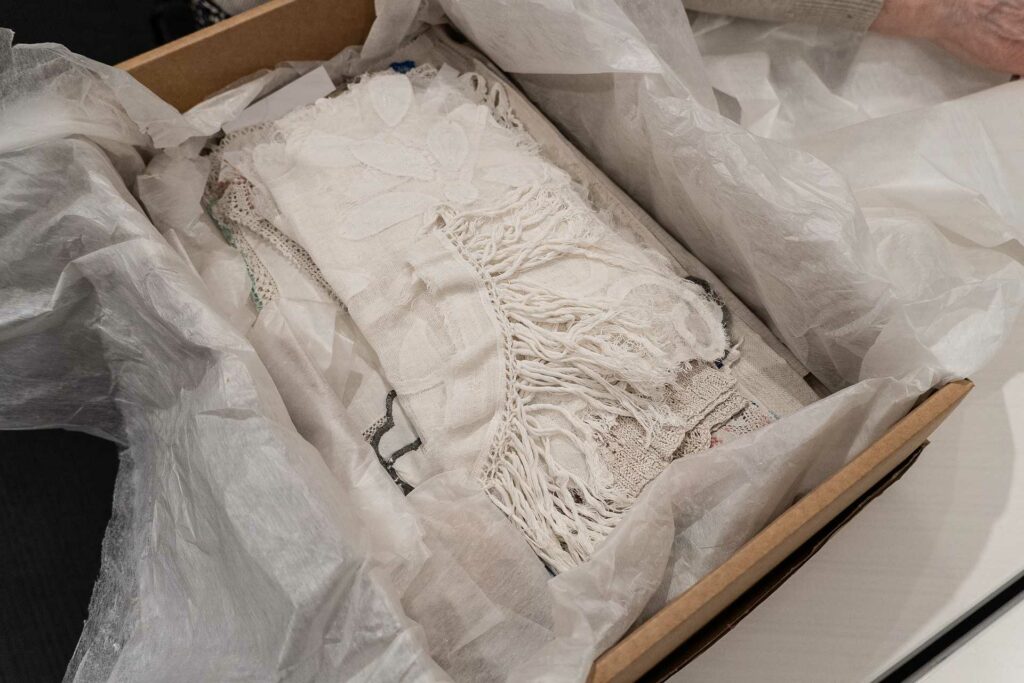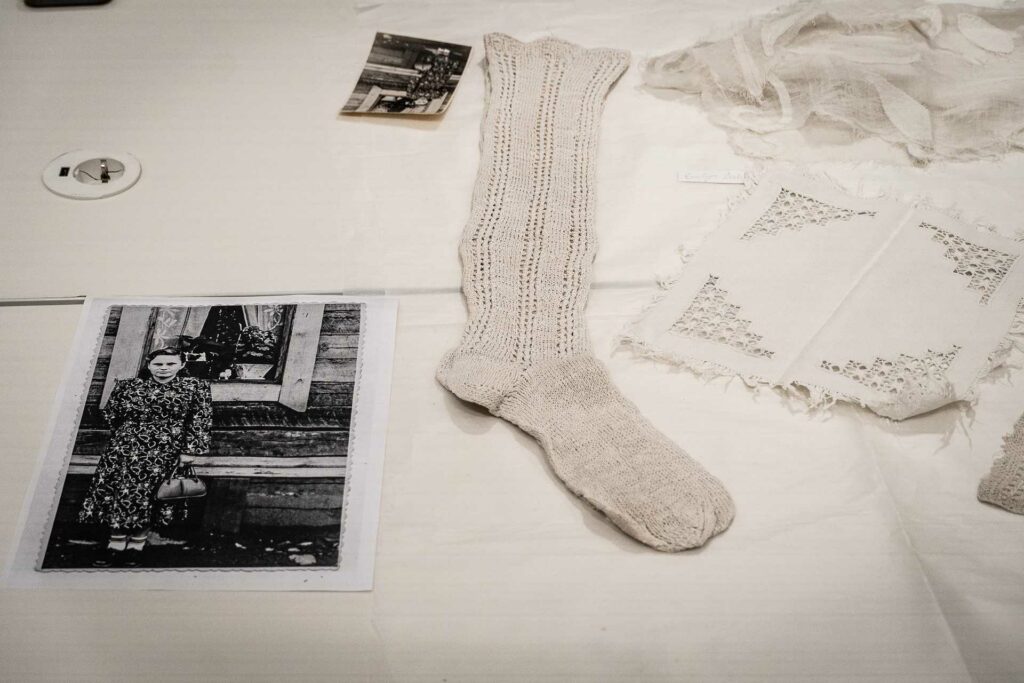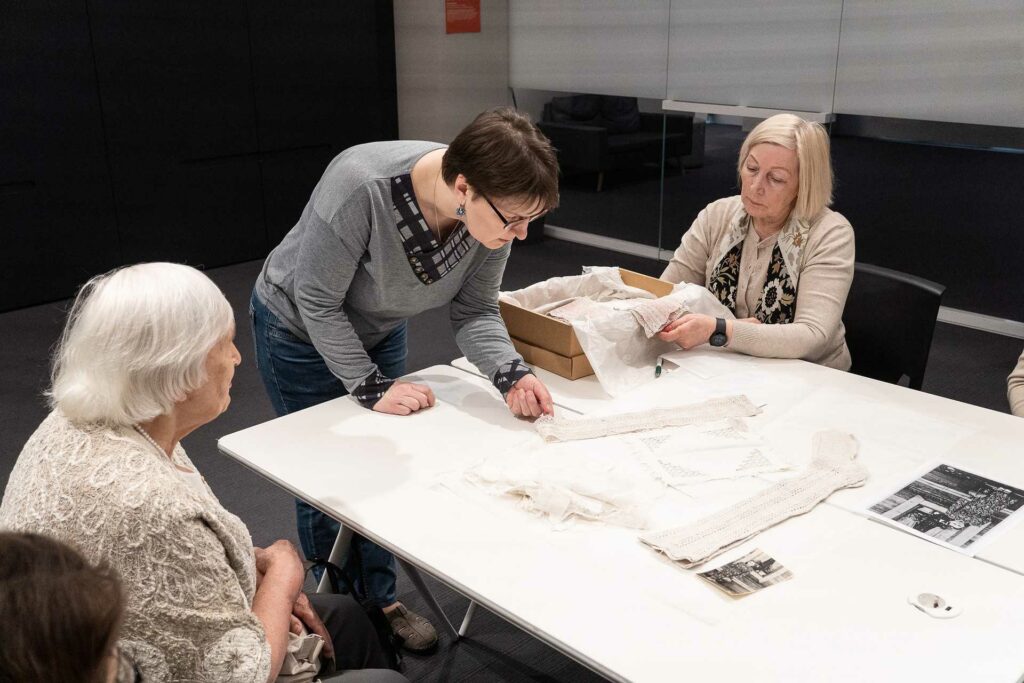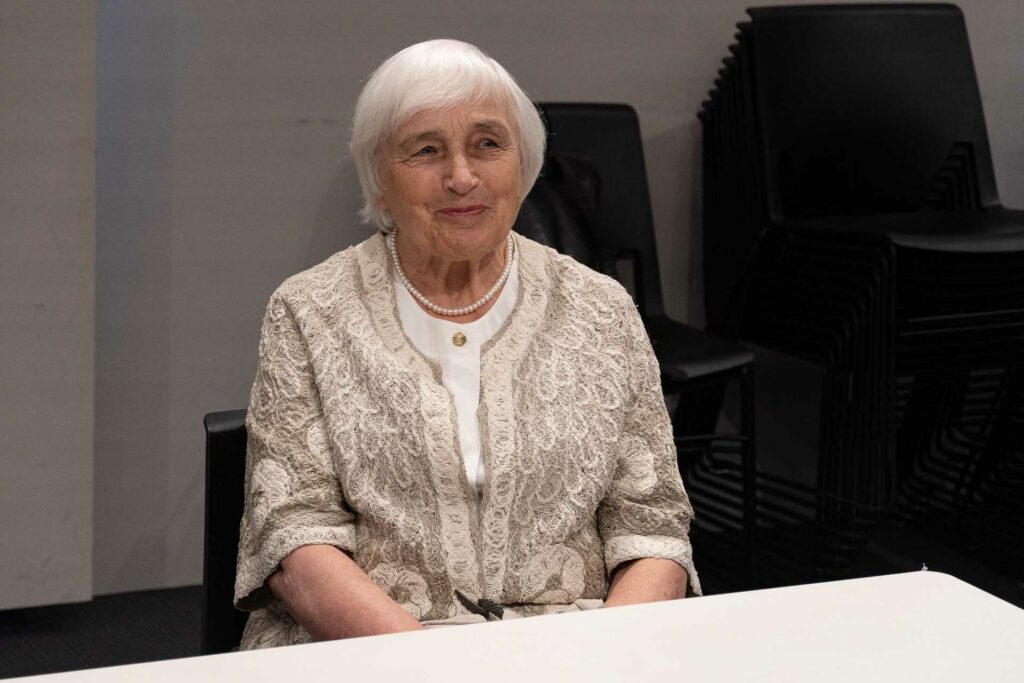The collections of the National Museum of Lithuania were supplemented by the museum exhibits of the former Petrašiūnai Secondary School in Kaunas. They were collected for many years and donated to the museum by Genovaitė Mikėnaitė-Kručienė. It is a very diverse material: among the 300 transferred exhibits are also 3th century. Objects, photos and local history material collected by Genovaitė Mikėnaitė in Lithuania, in exile or during the Soviet era in the 4rd-XNUMXth decades.
A significant part of the exhibits of the exile consists of handicrafts embroidered by Lithuanian exiles from the Srednaya settlement of the Irkutsk region: napkins, lampshades, a comb case embroidered by Genovaitė Mikėnaitė, cushion covers, Easter greeting.
"Especially interesting are the curtains sewn from gauze and appliquéd with scraps of white material by Eugenija's sister from Genoa. True, only a part of them survived, but we can see how they looked before in the preserved photo", says Virginija Rudienė, historian of the Lithuanian National Museum.
Genovaitė also preserved household items used in exile: a rolling pin made by her father, a half-coat bought by her mother in Irkutsk, prayer books brought from Lithuania by her compatriots, crosses, about 200 photos reflecting life in exile.
"We are very happy with the letters written by Genovaitė to her aunt, sister Eugenija and brother Linas to Lithuania. They are short but meaningful: about work, household. There is only one other in the exile collection of letters written by children, so they will significantly complement the collection," says V. Rudienė.
Among the exhibits handed over are also those in Lithuania even before the exile, in the 3th century. Household items used in the 4s and 1941s and in the Soviet era: meat grinder "Standard Werk", iron, beer bottles "Volf Engelman", in Germany in XNUMX. made plate and other.
Genovaitė was an active regional researcher, she led the regional studies club of Petrašiūnai secondary school, collected material about Kaunas with the students: crushed stone factory, HES construction, cogeneration power plant, road and bridge operation trust, wood processing plant; compiled albums about Petrašiūnai secondary school, Petrašiūnai and their inhabitants, Pažaislis architectural ensemble.
"I worked for 20 years at the Computing Center of the current Kaunas University of Technology, for 19 years as an informatics teacher at Petrašiūnai Secondary School, and also volunteered at the Petrašiūnai Community Center. I actively collected material about the old Petrašiūnis, and I also had a local history group. After collecting a lot of material, I restored the Petrašiūnai School Museum, once established by the teacher Ambrazevičienė, which was abolished after her retirement. The restored museum operated from 2007 to 2015," says Genovaitė.




About Genovaitė Mikėnaitė
Genovaitė Mikėnaitė was born in 1942 in Jaučiapievi village in Kupiškis district. On May 1948, 22, together with her parents Vincas (1878–1964) and Marija (1900–1997) Mikėnais, sister Eugenija (b. 1935) and brother Lina (b. 1936), she was deported to the Irkutsk region in Siberia. At first, the family was transported to the 52nd block in the taiga, about 70 kilometers from Irkutsk. The Lithuanians were housed in three barracks built by Japanese prisoners, and later, when the weather got cold, they were moved to the village of Srednaya in the Irkutsk district and housed in similar barracks also built by the Japanese. Both in quarter 52 and in Sredniaja, deportees worked in the forest: some cut down the forest, others pruned branches, transported and floated logs.
In middle school, Genovaitė started attending school, while her older sister and brother, who were a few years older, worked. They were the main breadwinners: the mother was in poor health, the father was 70 years old.
The family returned from exile to Lithuania in 1959. At first he stayed with his relatives, later he bought the house he lived in from the collective farm. Genutė studied physics Vilnius University, after his studies, he worked for three years at the Šilute district school and returned to Vilnius in 1967. He finished the computing courses organized by the Sigma Computing Machine Factory and started working on the newly developed Lithuanian computing machine Rūta-110. Here she met her future husband Rimantas Kručius.
As early as 1985, Genovaitė visited places of exile, tidied up cemeteries, and in the year of the Revival, she was one of the organizers of the expedition to Sredniaja to bring back the remains of the exiles.

